
State of my collection – 2023
A version of this article was originally published in Norwegian at Pennen er mektigere on March 12, 2023. Parts of it has been rewritten for the sake of this translated version.
I moved into a new flat in October last year, and although I’d mostly gotten things in place before Christmas, large parts of my pen collection was packed away in boxes until the beginning of March. I had unpacked the pens and inks I use regularly, but the collection of old Norwegian-made pens and inks had to wait until I got a proper cabinet for it.
One of the joys of collecting is – at least for me – figuring out how to display your collection, how to organize it in a kind of exhibit. Early in March, I went to IKEA and bought myself a Billy bookcase with glass doors, and with that installed, I could finally – after five months – unpack the collection and start organizing it the way I wanted it.
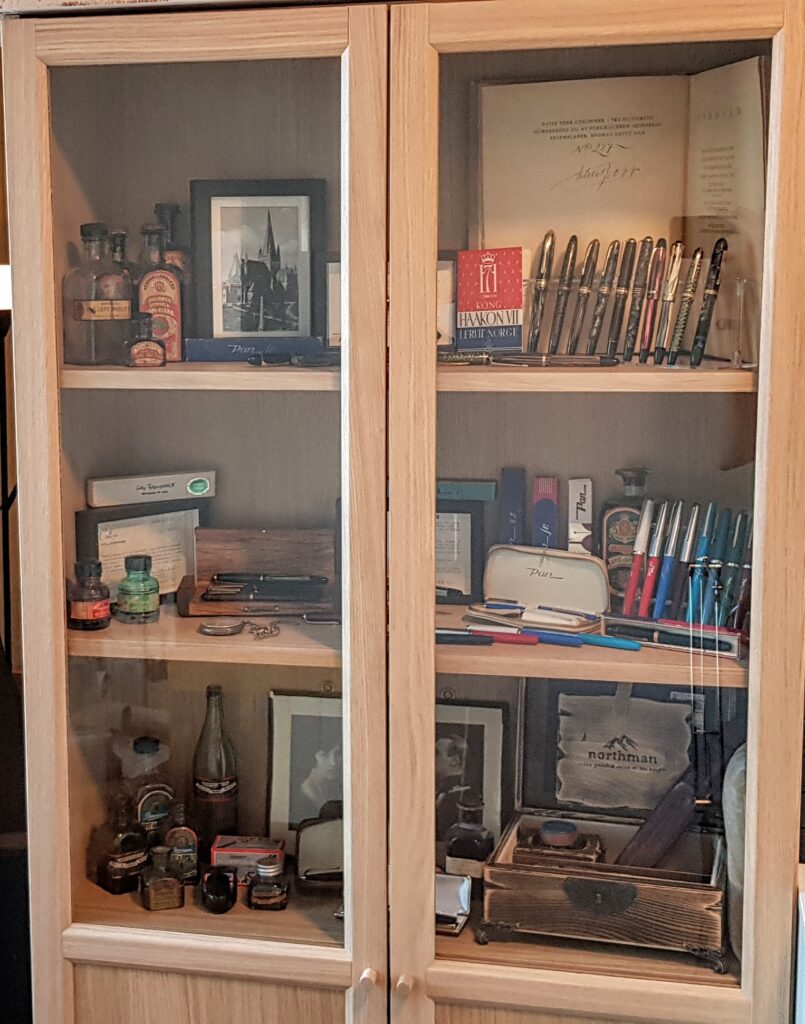
I decided to not put everything behind the glass doors. It would just be too full, so rather than displaying the entire collection, I instead curated a representative selection. That is, most of it is here, but a few things are put in a drawer, out of sight. In the end, space considerations trumped the desire to display everything. Also, this is not meant to be a static exhibition, but rather a living collection that will undergo constant adjustments, especially as more objects are added.
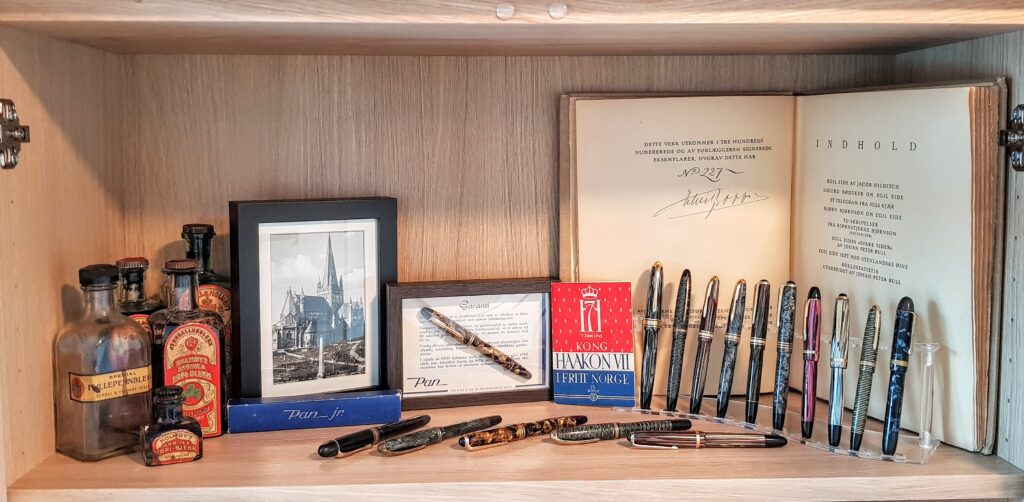
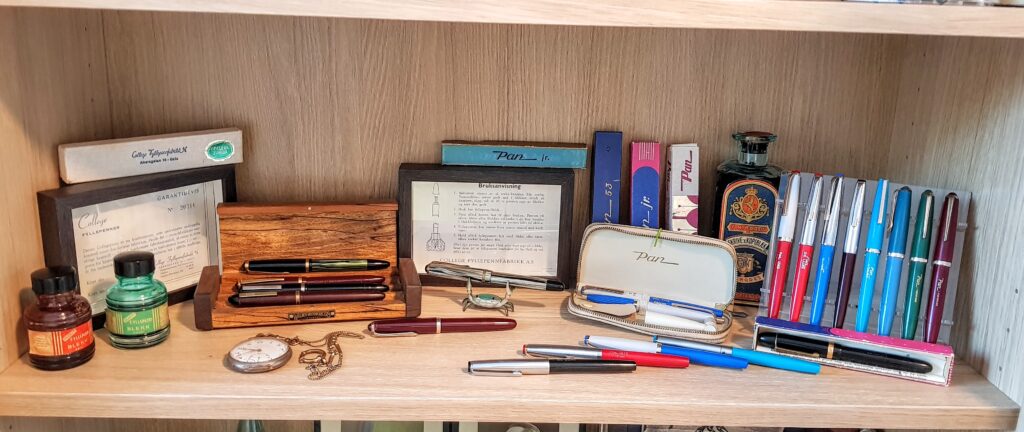
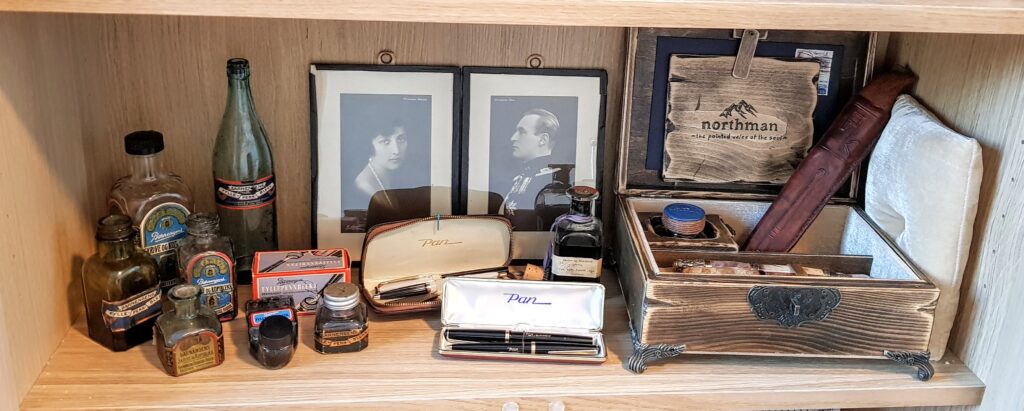
This part of my pen collection, is centered around Norwegian brands of pens and inks, and other related items. Norway had a flourishing pen industry after the second world war. There where multiple attempts at starting pen factories, although most of these failed after just a few years. As a Norwegian pen blogger, I’ve made it my mission throughout the past several years, to dig up as much information I can possibly find about these Norwegian – in large part forgotten – brands, which has also led to this collection. This is what I regard as my “collection”. I also have a large number of fountain pens and other writing utensils that I use for writing, but I don’t really see them as a collection in the same way as the items I am writing about in this article. Let’s take a closer look:
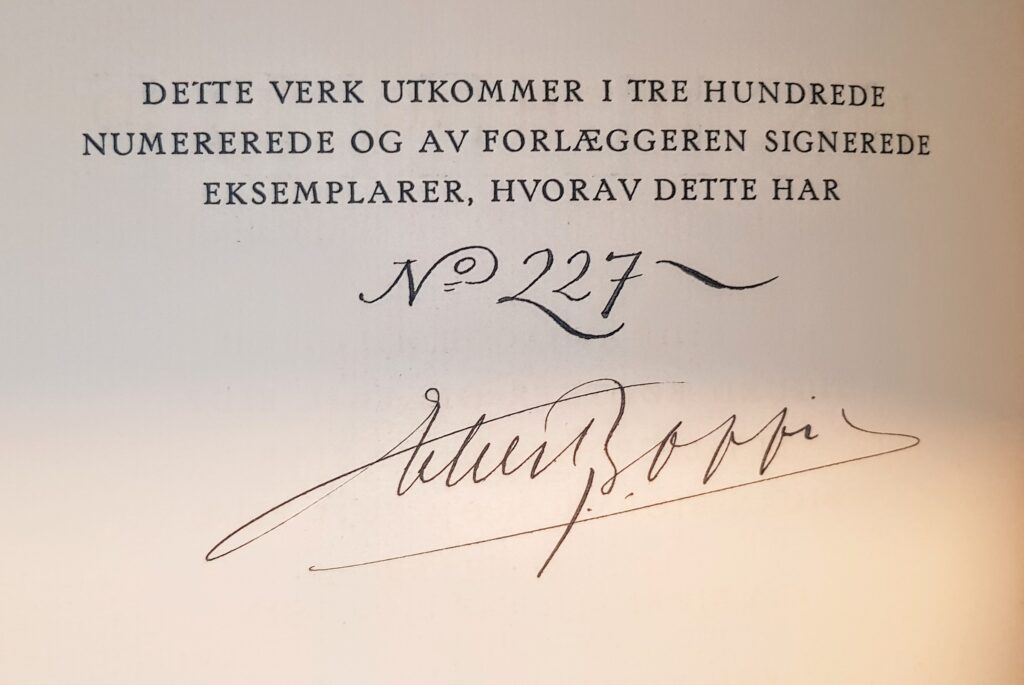
This is from a festschrift from 1919 in honor of the Norwegian actor Egil Eide. I have no particular interest in the protagonist of the book, but it was published by Eberh. B. Oppi kunstforlag, which was the same company that also manufactured the Pan pens. Not only that: the festschrift was printed in only 300 copies, all of which where numbered and signed by hand by Eberhard Bredesen Oppi himself. I’ll be honest enough to admit that the publisher’s original signature was what first drew me to buying this book. I think it works well as a backdrop for some of the finer Pan pens in the collection.
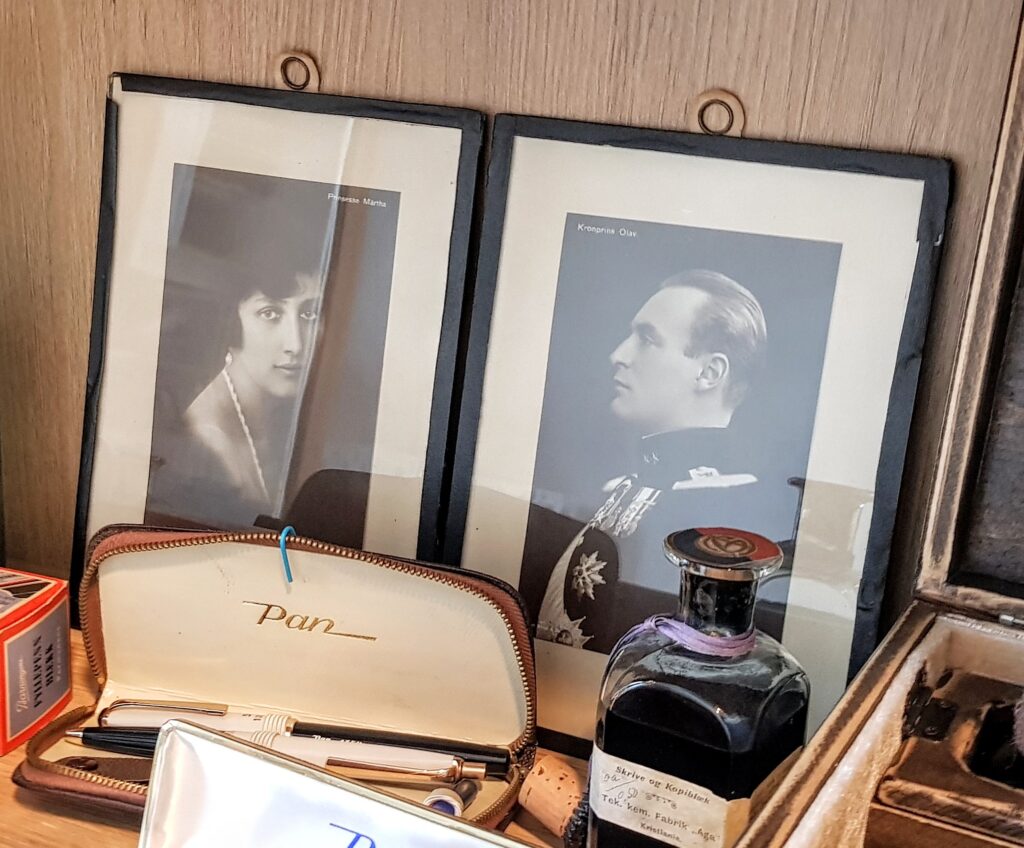
Another couple of items that in itself doesn’t have much to do with the pen collection, but which I still think fits in nicely, are the pictures of the (then) Crown Prince Olav and Crown Princess Märtha. These portraits were taken for their wedding in 1929.
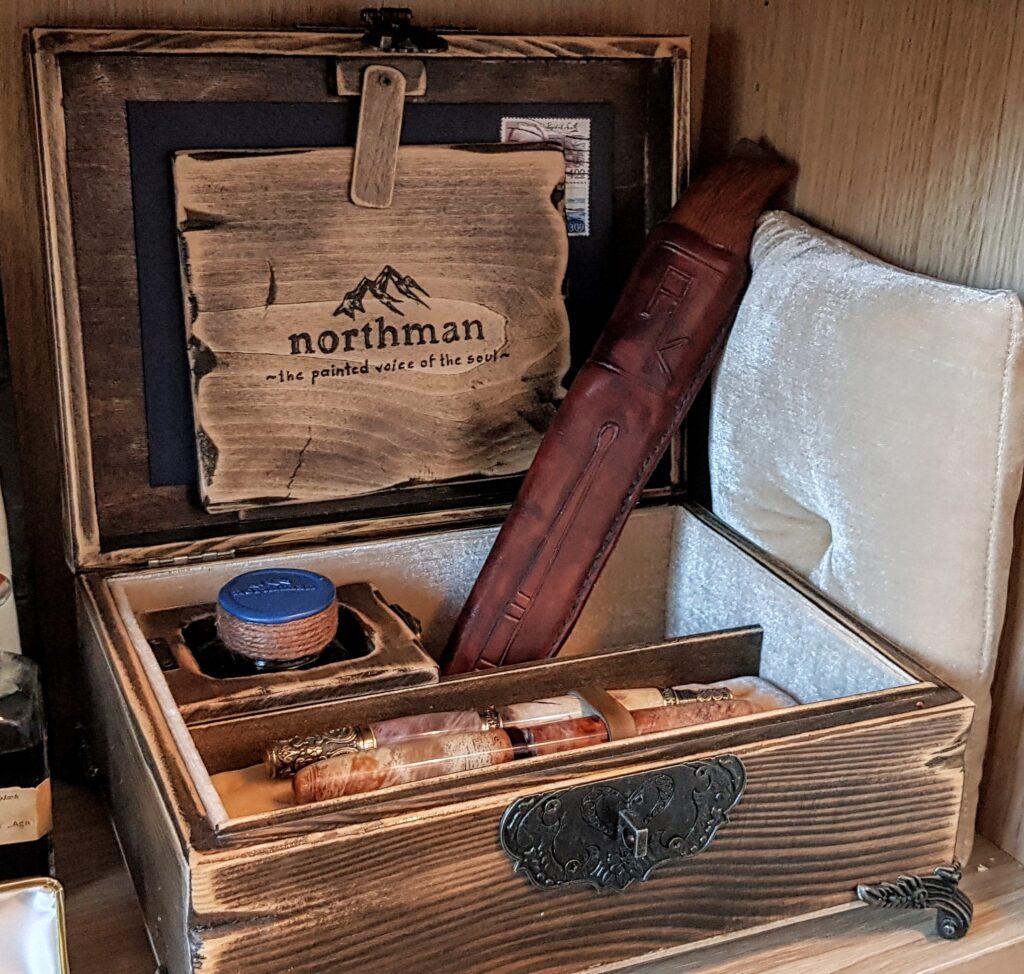
The knife in this beautiful pen box has a special meaning for me. The handle is made from a cracked bar from my marimba. The deepest bars on a marimba are quite thin in the middle, and can easily crack if you are unlucky and play too hard. When I bought a new bar to replace the one that was broken, I gave the old one to a knife maker, and a few months later I got a knife in return made from, among other things, wood from the marimba bar. This is Honduran rosewood, and not a material that’s easy to come by, so it’s quite exclusive. I haven’t played much marimba since I finished my music studies, and eventually it became difficult to justify having such a space-consuming and expensive instrument that I hardly used, so a few years ago I sold it. This knife, then, is the only thing I have left of this beautiful instrument, and it has great emotional value for me. I think it went well with the pen box from Northman, which was also made especially for me by a Norwegian pen maker, and which together with the two pens, was a gift I really appreciated.
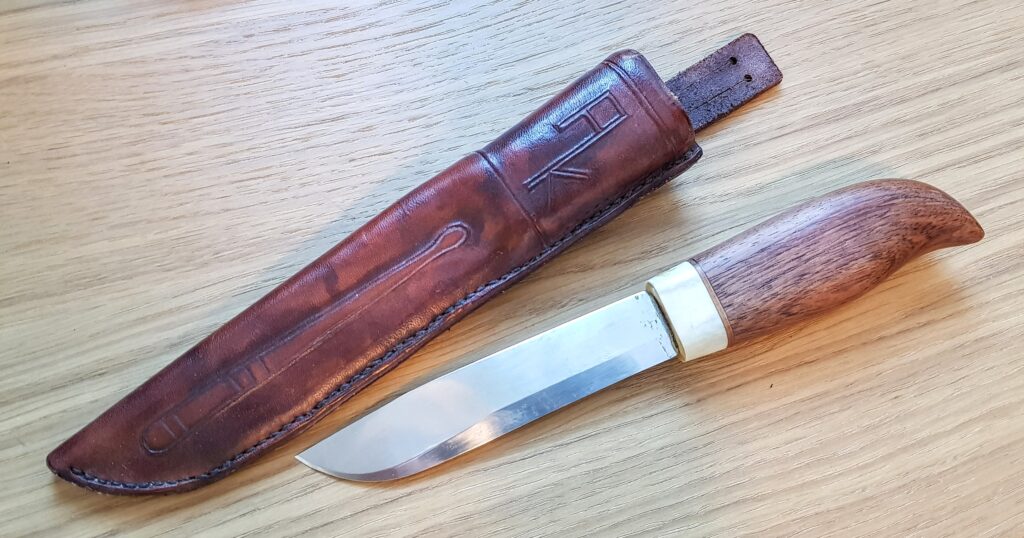
By the way, I do have another cracked bar from the marimba as well. My dream is to make a fountain pen out of it. I just need to find the right pen maker first. It must be someone who knows what they are doing, so I can be sure it’ll be a good pen. There are also certain challenges with exporting/importing Honduran rosewood, so perhaps it would be best if it didn’t have to cross national borders.
Some more pictures:
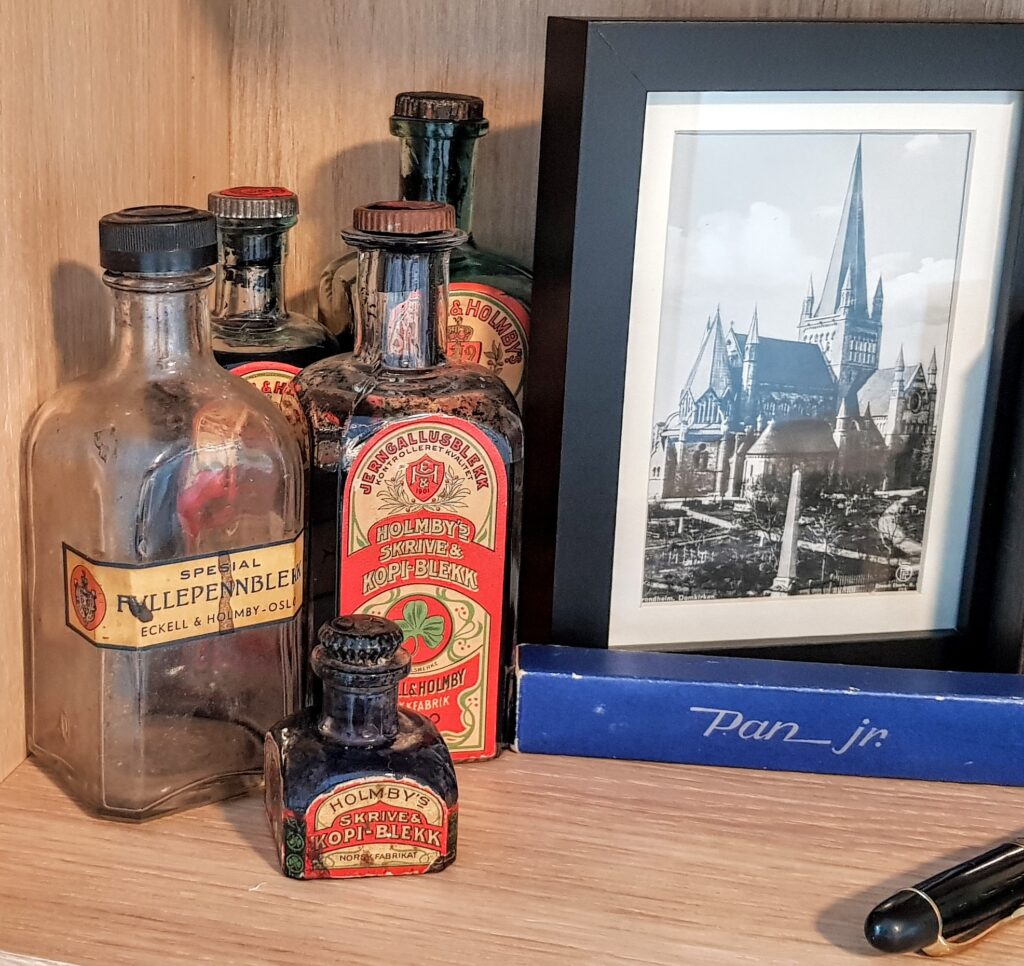
On the left we have a collection of ink bottles from Eckell & Holmby. Some of these are unopened and over a hundred years old. The picture of Nidaros Cathedral is a postcard published at Eberh. B. Oppi Kunstforlag (you can barely see the round Oppi logo in the bottom right corner of the card).
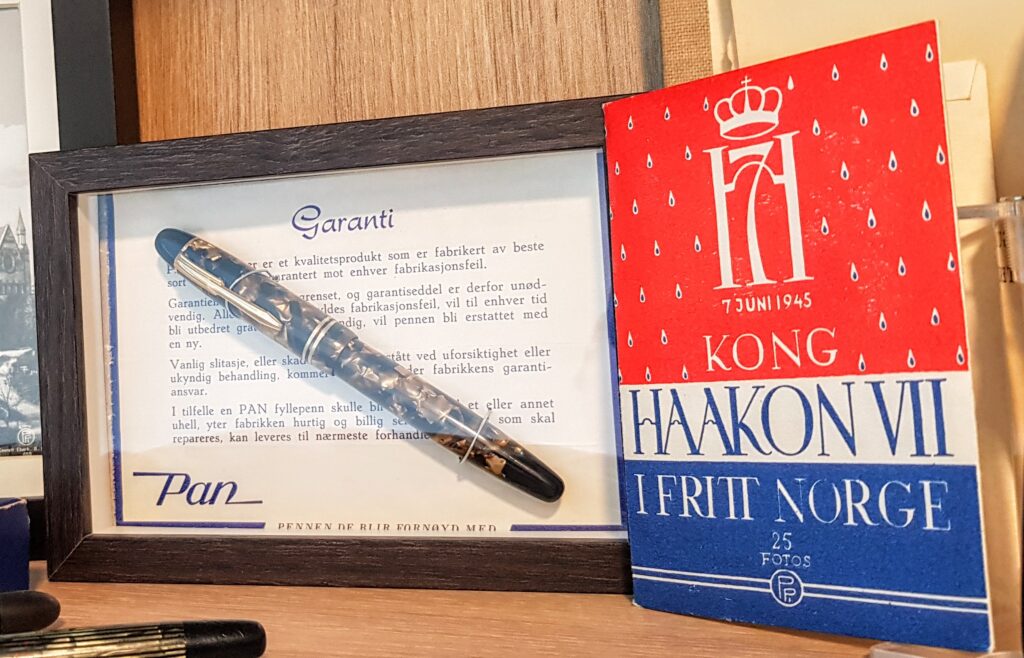
Here we have a warranty card and a fountain pen from Den Norske Fyllepennfabrikk (owned by Eberh. B. Oppi). On the right, a publication from Oppi’s art publishing house with 25 photos from the Norwegian royal family’s return home in 1945, after the war.
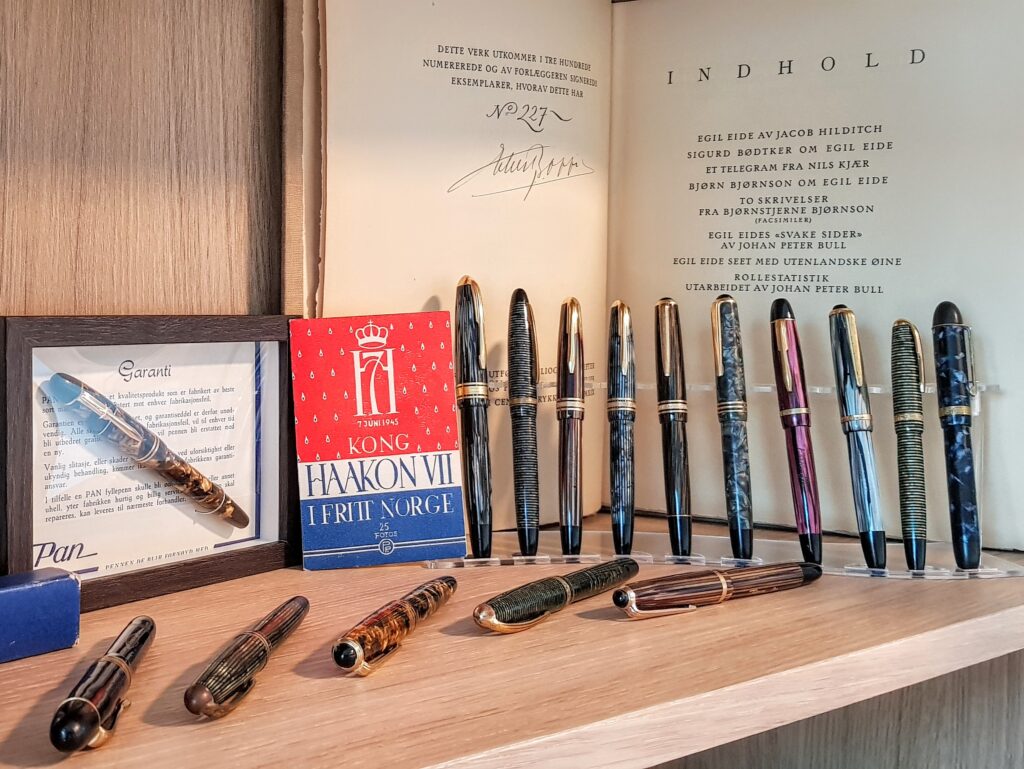
A selection of Pan pens from Den Norske Fyllepennfabrikk. The pens are mostly from the 50s, with the exception of a couple (the one on the far left, and the one on the far right), which may be from as early as the late 30s. In the back we have the festschrift to Egil Eide, with Eberhard B. Oppi’s original signature.
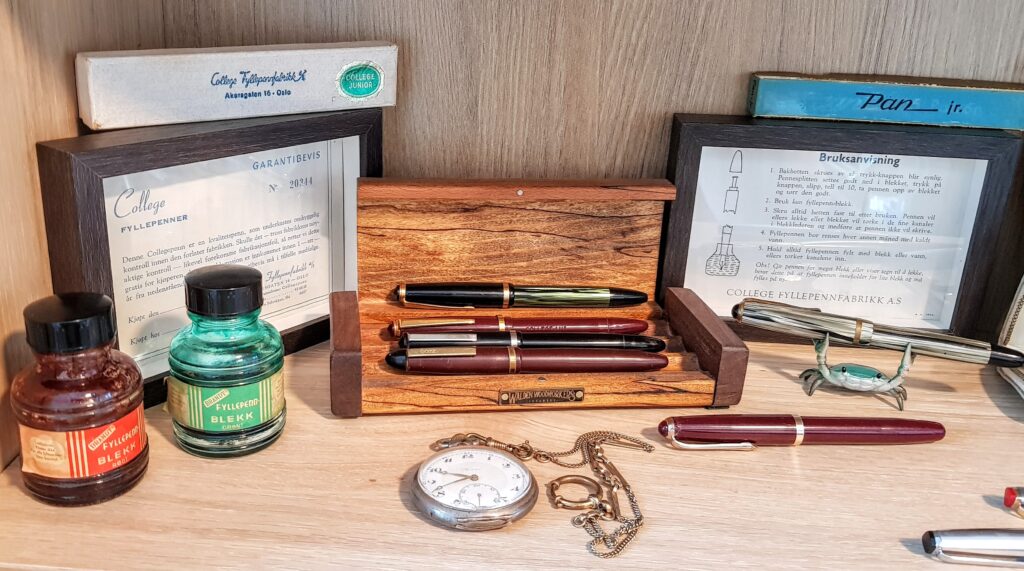
From the left we have two ink bottles from Brandt. Behind them a waranty certificate and a box from College Fyllepennfabrikk. In the wooden box is a Dorn pen (closest to camera) and three College pens (the Dorn factory changed its name to College in 1953, so these are all from the same factory in Ski, Norway. The factory closed down a few years after the name-change). In front I have a pocket watch that originally belonged to my grand uncle. Next to it is my grandfather’s old Pan Formpoint, and in the Crabbie pen holder is my great grandfather’s Pan 27, in front of an instruction manual from College Fyllepennfabrikk.
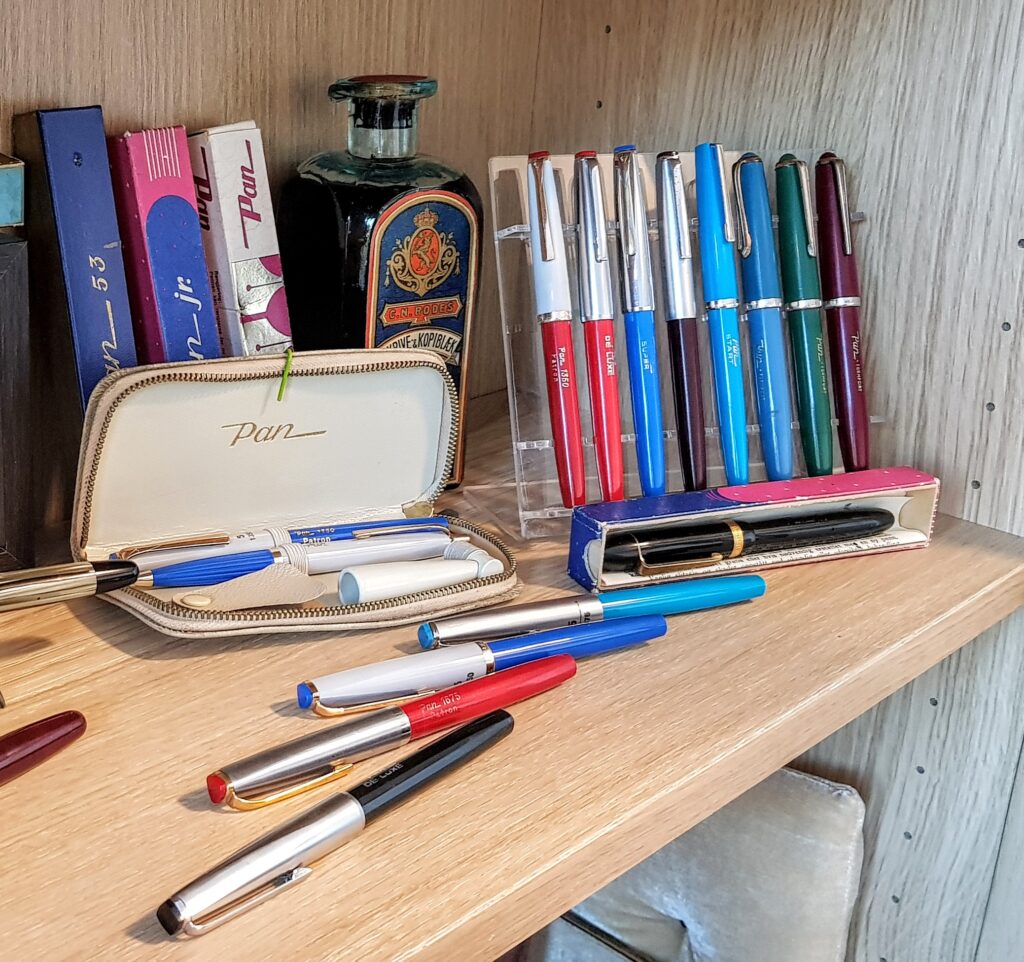
Various Pan school pens from Den Norske Fyllepennfabrikk. The parts for these were imported from Germany, and the pens were only assembled in Norway. These are from the 1960s and onwards, possibly as late as the 80s. The black pen in the box is an older Pan Junior, probably from the 30s or 40s. In the background there is a small selection of Pan boxes, as well as an unopened large bottle of “writing & copying ink” from C.N. Rode. The bottle is over a hundred years old.
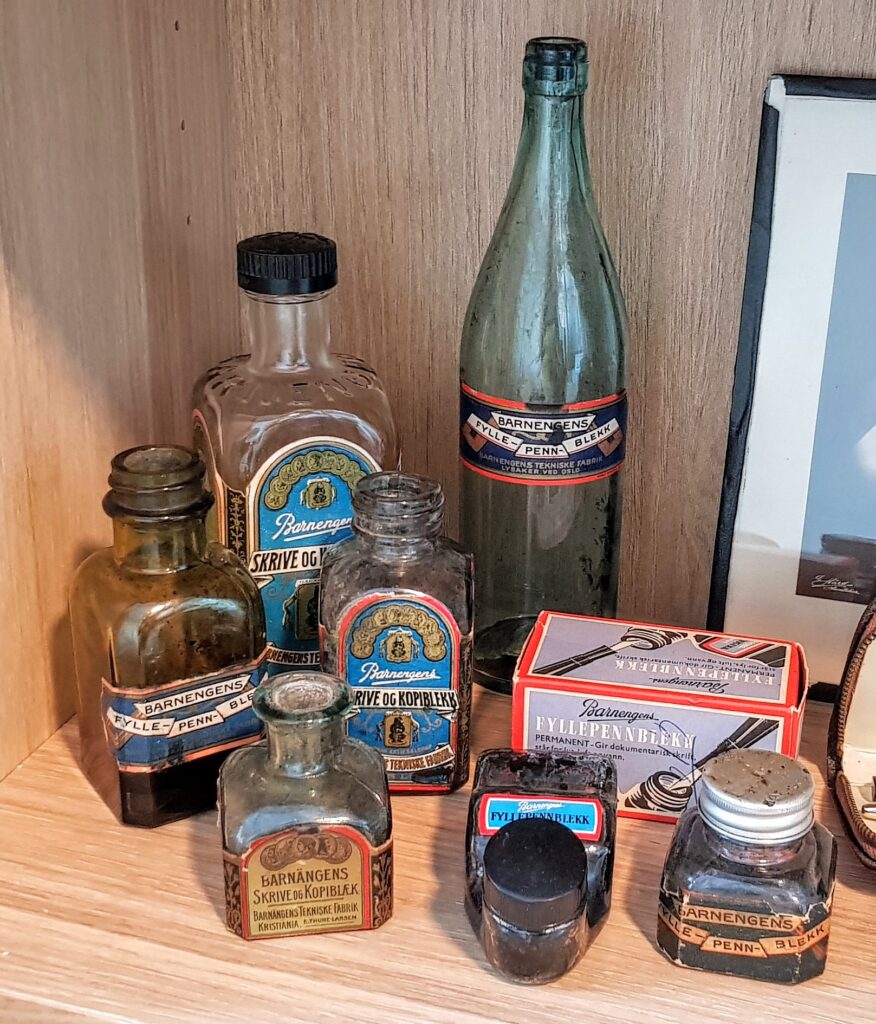
A selection of ink bottles from Barnengens Tekniske Fabrikk. The oldest of these are probably around a hundred years old. The newest one (in the middle at the front) is probably from the 50s or 60s.
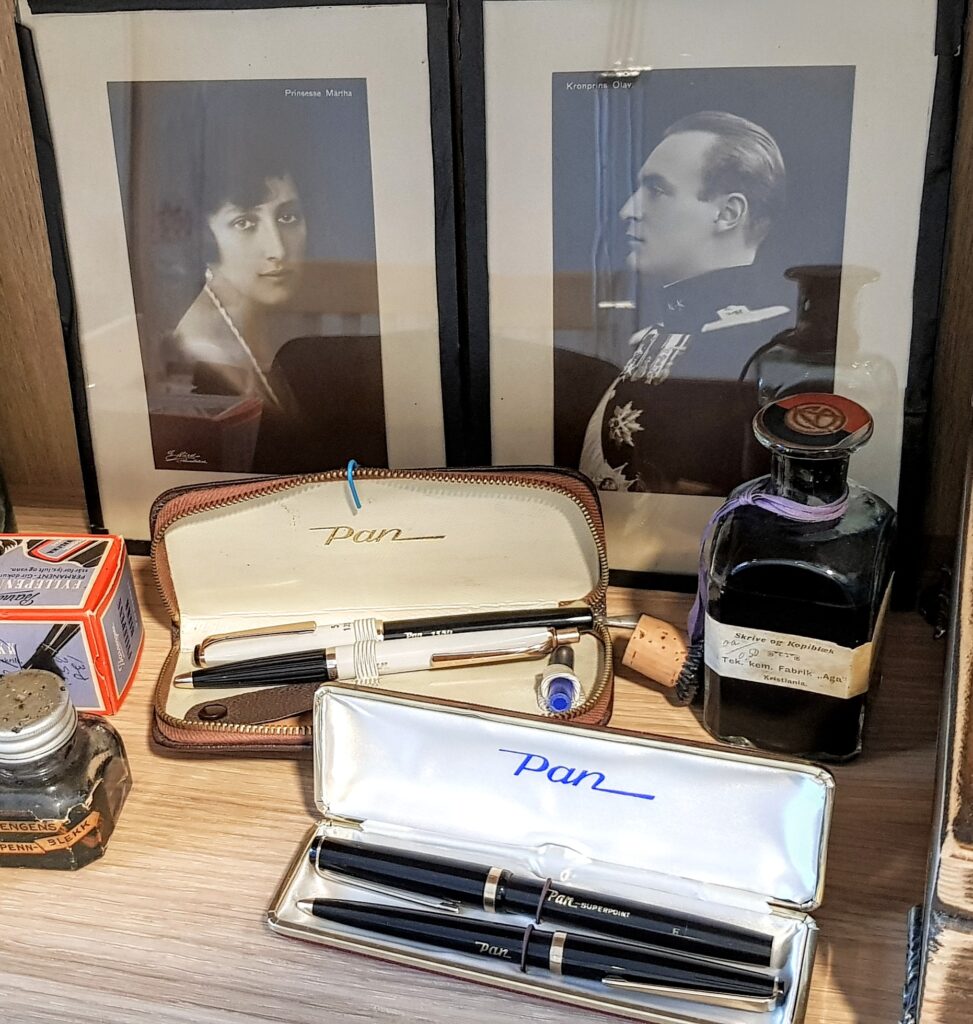
Finally, the pictures of the old crown prince couple. In front are a few more Pan pens from the 60s in some nice pen cases, as well as an unopened bottle of writing and copying ink from Teknisk-kjemisk Fabrik “Aga”. The fact that the bottle is marked “Kristiania” indicates that it is from before 1924 (when Kristiania changed its name to Oslo). Like several of the ink bottles in the collection, it is in exceptionally good condition for being so old.
Where does my collection go next? Well, there are several Norwegian brands that are not represented in my collection yet, simply because I haven’t been able to track down any items from them. My long-term goal is to have at least one item from each of the different brands I know of. I have written about many of them on the Norwegian part of the blog, which I have also linked to in this blog post. I will do my best to translate those articles to English in due time. I consider that a priority, since they contain information that definitely haven’t been available in English before.
One thought on “State of my collection – 2023”